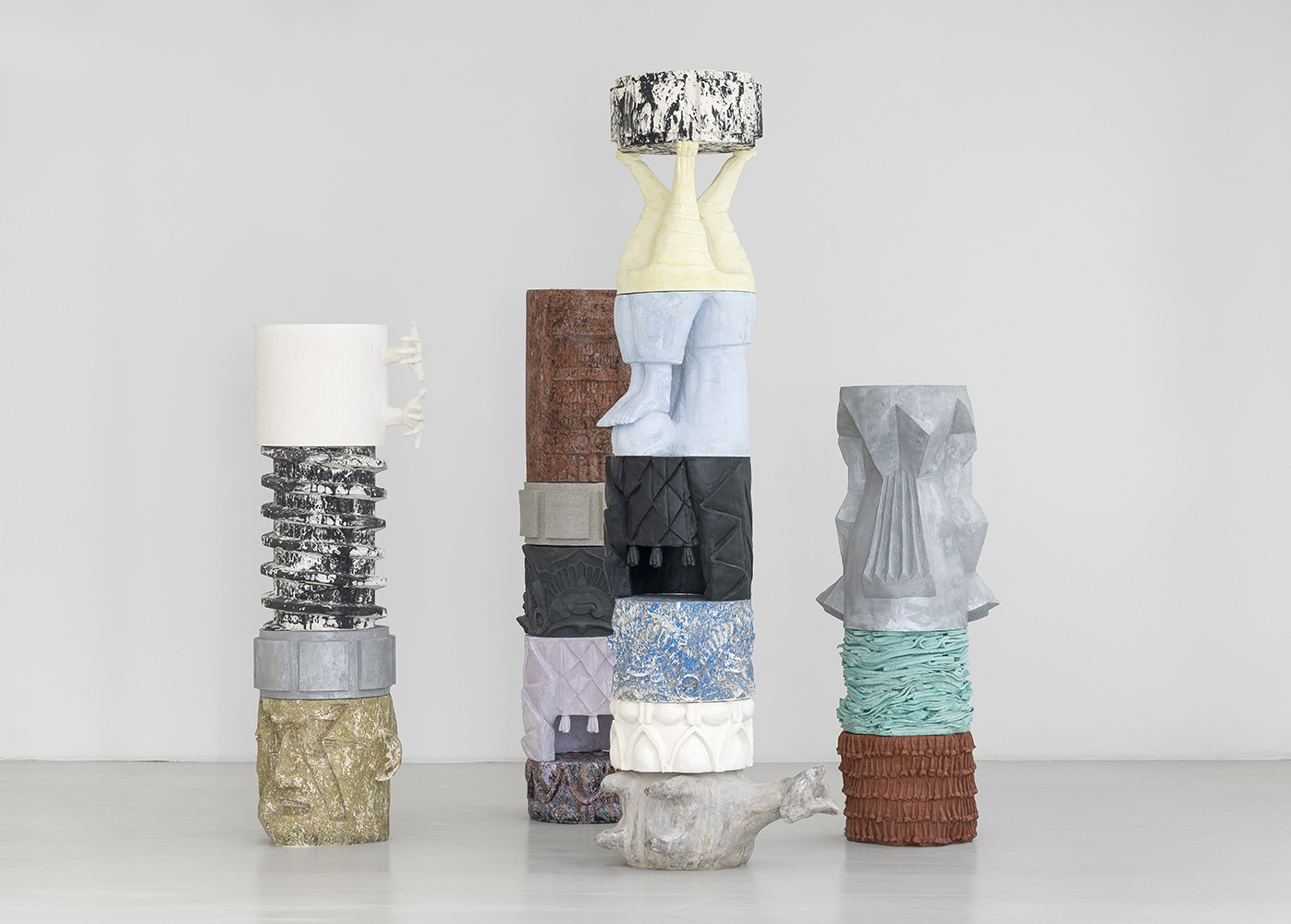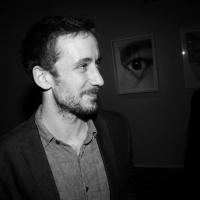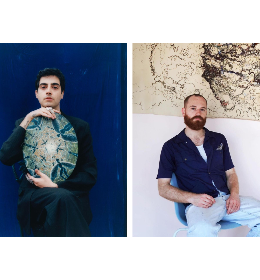Though they are composed of multiple parts, each sculpture resembles a solitary column shaft — standing tall and erect. Each part of the shaft, however, evokes different time period from a different culture or era. The result: a visual melange of cultural heritage icons — their juxtaposition creating a dialogue between the different civilizations that have occupied the Earth over the centuries.
Aesthetically, Veboom’s sculptures are often defined as “augmented minimalism” despite explicitly referencing ancient Anatolian cultures — cultures that derive from a geographical area whose archaeological relics have almost entirely been erased today. They also, however, reference Roman, Iberian, pre-Columbian cultures — intertwining historical references with more abstract and personal elements.
Among the segments that make up the column shafts are replicas of synagogues, a virgin Mary with a face borrowed from a Henri Laurens sculpture and an Amazonian tribal tooth bracelet.
If chronology is usually represented horizontally (as observed in timelines) then the influence of time on material forms is vertical. This axial understanding of time and materiality is imperative to Verboom’s work. Her sculptures draw on a vertical understanding of natural and historical processes on horizontal strata and materials.
It’s no surprise therefore, that the artist’s current exhibition at Jérôme Poggi Gallery in Paris, running through July 17, is titled “Temporal-daten” — a reference German philosopher Edmund Husserl’s phenomenological conception of time.
“With these works, I wanted to explore the mutation of the representation of forms, and the ways in which shapes have a life of their own through the history of civilizations”. If the shapes themselves — or the ideas they evoke — enjoy a certain timelessness, Marion Verboom is interested in exploring their temporality and the cultural markers defining their representation.

Achronies © Nicolas Brasseur
After performing extensive research and analysis, Marion Verboom returned to her studio, where she began the process of modelling and moulding the column shaft segments. By working with liquid resin and plaster casts, Verboom was able to almost paint her casts.
“The step from modelling to moulding allows me to add another layer of mutation to the creation of these shapes.”
Therefore, although each piece of work is made in three editions, each sculpture remains unique through the paintery process and due to the fact that Verboom never employs the same material or the same pigment twice. “This has allowed me to understand that shapes are not defined by their limits, their contours, but by their substance, their constituents.”
How can this eclectic ensemble of multicultural references be interpreted? The idea is to go beyond a purely narrative approach. There is no overall interpretation: “a column doesn’t just tell one story, but it allows me to create new interactions between civilizations and plastic traditions”.
Each component is created independently, each element, artifact, fragment or motif having inspired a unique reaction in the artist. “Of course there are links between the different elements, but it’s not a narrative.” Beyond the plastic aspect itself, the series of references allow to establish a particular link between the works, “I am not interested in chronology, it’s more about reinterpreting time and the evolution of forms,” explains the artist.
Verboom’s is greatly fascinated by the unknown, and “mystery, phantoms and the history of science” are real sources of inspiration for the artist. The history of science is, indeed, the focal point of her work Le Métamorphe.

Le Métamorphe © Nicolas Brasseur
In a way, the installation is a “representation of a 3.0 human genome”. Almost like a web, Le Métamorphe is made of four different materials, each evoking a different gesture and a different type of research on material. It’s a work “where I have incorporated my ideas on ornamentation as well as my work with very specific materials” as the artist explains.
Le Métamorphe is made of stucco, steel, paper, clay and raffia. All these materials reference different representational codes, “raffia reminds me of the 60s” — “I have remodelled all materials, to give them a new resonance. This work is almost a study of matter, a zoom-in into its different components”.
In September, a permanent installation by Marion Verboom commissioned by the Palais de Tokyo will be presented at the institution’s new space, Toguna.
Her work is also on show at the International Museum of Modest Art in Sète as part of the group exhibition “En toute modestie — Archipel Di Rosa”, running through September 17, and at The Pill gallery in Istanbul through July 22, on occasion of the group exhibition “Surreal House.”









